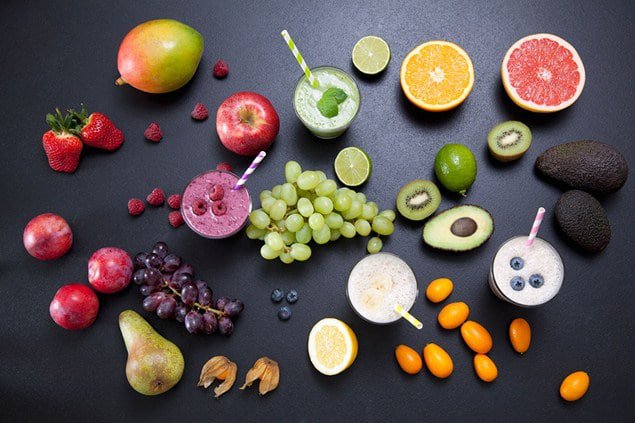6 Ways To Lose Weight Without Dieting
New weight-loss research advises you should stop dieting – and start eating and running more.
New weight-loss research advises you should stop dieting – and start eating and running more. – By Liz Applegate

If you’re a runner who’s struggled to lose weight, blame your genes – prehistoric genes, that is. Thousands of years ago – even as recently as several decades ago – humans spent much of their days doing hard, physical work that burned lots of energy. Our ancestors fuelled all that labour with a diet rich in whole foods loaded with fibre, phytonutrients and live bacteria (not processed foods). When food became scarce, their bodies kicked into survival mode by slowing their metabolism, storing more kilojoules as body fat and becoming more efficient at metabolic and physical activities.
Unfortunately for modern humans, who generally do far less physical labour, the same happens today: when we cut large amounts of kilojoules from our diet (which is how many runners approach weight loss), our bodies react by becoming more efficient – potentially burning fewer kilojoules. In short, our physiology is designed to hold on to kilograms – not lose them.
So what’s a runner who wants to slim down to do? More and more studies show that the key to losing weight is keeping your kilojoule burn high through plenty of daily exercise and physical activity, and eating quality kilojoules to fuel that activity. Whole, minimally processed foods supply the energy you need while helping to regulate appetite and reduce hunger levels, which will spur weight-loss. Obesity researchers call this maintaining a ‘high energy flux’. That means that runners should aim to burn a lot of kilojoules while also eating a lot of healthy foods. Here’s how you can amp up your ‘energy flux’ and kick your weight loss into high gear.
1. Eat More Bacteria
There are thousands of bacteria strains in your intestines. A 2013 study review found certain strains influence obesity – some affect the amount of energy extracted from food. One strain, bifi dobacteria, aids in weight-loss and lessens symptoms related to obesity, such as a rise in inflammatory markers. Cultured milk products, such as kefir, yoghurt and cheese, are rich in bifi dobacteria.
How: Aim for one serving of cultured dairy (and other probiotic foods, such as miso and tempeh) every day.
2. Go Natural
Whole, natural foods, such as vegetables, fruits, beans and whole grains are high in fibre. They take up volume in your stomach and help you feel full for longer. Soluble fibre (beans, oats, fruit) slows the stomach-emptying process and stabilises blood sugar, keeping hunger at bay. High-fibre foods also contain prebiotics – the special starches that serve as food for the healthy bacteria in your GI tract.
How: Eat at least three servings of vegetables and three pieces of fruit daily, and add fibre-rich sweet potatoes, beans and whole grains to your diet.
3. Burn Kilojoules Eating
Studies show that capsaicin, a compound in hot chilli peppers, may help boost kilojoule burning, reduce appetite and aid in weight control. That makes peppers (fresh or dried), pepper flakes or chilli powder a smart addition to your diet. Green tea, which has special polyphenols called catechins, may also help boost kilojoule burning and reduce hunger levels.
How: Swap your second cup of coffee for green tea. Add a sprinkle of red pepper flakes to soups and pasta sauce.
4. Downsize Your Plate
A new study from an American university shows that 92 per cent of people eat everything on their plates. That’s not so bad when you’re eating salads, but could mean kilojoule overload when it comes to ice cream, chips and other indulgent foods. Don’t deny yourself these treats; just trick yourself a bit by modifying what you see.
How: Serve chips in a small bowl (rather than out of the big bag) and use smaller serving utensils and plates, which will make your reduced portions appear larger.
5. Switch Up Workouts
Keep up your running mileage, but toss in some new activities, too. Doing so will work muscles that are often neglected by runners and will also create adaptive changes on a microscopic level, such as building new muscle proteins and cellular compartments that help burn more kilojoules. It will also ensure you don’t become bored doing the same old running routes and nothing else.
How: Wintery or wet conditions have you stuck inside? Now’s the perfect time to try swimming or an indoor boot camp class.
6. Boost ‘Extra’ Activity
Exercise isn’t the only way to burn kilojoules. Everyday tasks such as walking, standing and cleaning can have a big impact on your total kilojoule burn and tip the weight-loss balance in your favour. Look around your work and home environments for ways you can make yourself more active.
How: Don’t sit for more than 30 minutes at a stretch – set a timer to remind you to get up. Watch TV while standing up and folding laundry. If your employer offers it, get a standing desk at work, and take the stairs more often.
READ MORE ON: food lose-weight weight weight loss

